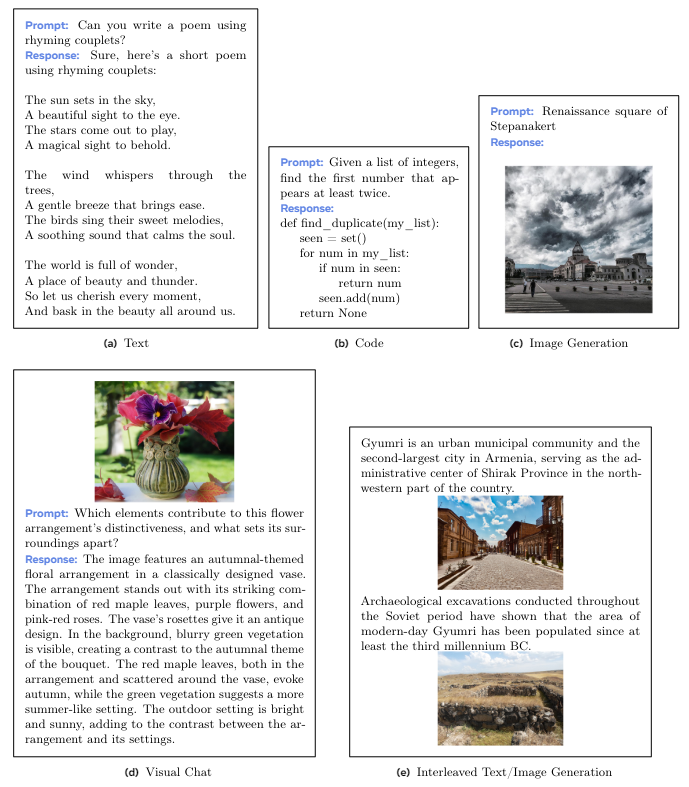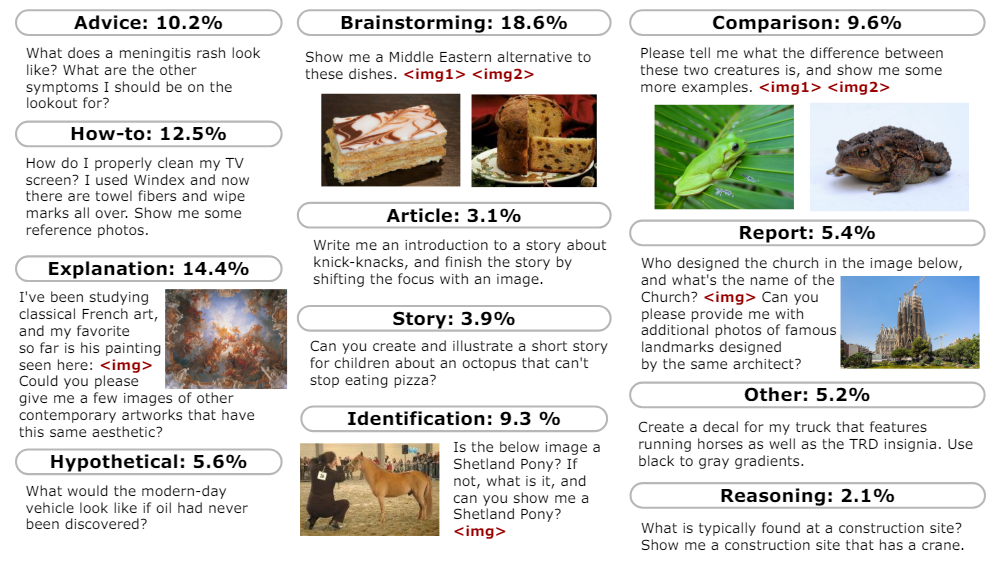Table of Links
4 Human Evaluations and Safety Testing, and 4.1 Prompts for Evaluation
5 Benchmark Evaluations and 5.1 Text
7 Conclusion, Acknowledgements, Contributors, and References
Appendix
B. Additional Information of Human Evaluations
3 Alignment
We follow recent work in using a light weight alignment stage based on supervised fine tuning on carefully curated high quality datasets (Zhou et al., 2023). We include a range of different types of data, targeting both exposing model capabilities and improving safety.
3.1 Data
We separate our supervised fine-tuning (SFT) dataset into the following categories: Text, Code, Visual Chat, Image Generation, Interleaved Text/Image Generation, and Safety. We include examples from each category from the Chameleon-SFT dataset in Figure 7.
We inherit the Text SFT dataset from LLaMa-2 (Touvron et al., 2023) and the Code SFT from CodeLLaMa (Roziere et al., 2023). For the Image Generation SFT dataset, we curate highly aesthetic images by applying and filtering each image in our licensed data, with an aesthetic classifier from Schuhmann et al. (2022). We first select images rated as at least six from the aesthetic classifier and then select the top 64K images closest in size and aspect ratio to 512 × 512 (the native resolution of our image tokenizer).
For both Visual Chat and Interleaved Text/Image Generation SFT data, we focused on very high-quality data collection using third-party vendors following a similar strategy recommended by Touvron et al. (2023); Zhou et al. (2023). We do not include any Meta user data. We present our dataset’s statistics in Table 3.
Safety Data We include a collection of prompts that can potentially provoke the model to produce unsafe content, and match them with a refusal response (e.g. “I can’t help with that.”). These prompts cover a wide variety of sensitive topics, such as violence, controlled substances, privacy, and sexual content. Our collection of safety tuning data includes examples from LLaMa-2-Chat (Touvron et al., 2023), synthetic text-based examples generated with Rainbow Teaming (Samvelyan et al., 2024), image generation prompts manually selected from Pick-A-Pic (Kirstain et al., 2023) for safety testing, examples for cyber security safety (Roziere et al., 2023), as well as mixed-modal prompts collected internally through manual annotation and automatic expansion (Honovich et al., 2022). Collecting mixed-modal prompts is of particular importance, since it addresses potential multi-modal attack vectors, which are outside the distribution of text-only and text-to-image safety tuning datasets.
3.2 Fine-Tuning Strategy
Data Balancing We found that balancing modalities within the SFT stage is important for high quality alignment. Specifically during the SFT stage, if there is a severe imbalance between pairings of modalities (or when a specific modality should trigger), the model learns an unconditional prior of generating that modality which can either mute or over exaggerate the generation of a single modality.
Optimization Our supervised fine-tuning strategy incorporates a cosine learning rate schedule, starting at an initial rate of 1e-5, combined with a weight decay set at 0.1. We maintain a batch size of 128, accommodating sequences up to 4096 tokens. During fine-tuning, each dataset instance comprises a paired prompt and its corresponding answer. To improve efficiency, we pack as many prompts and answers as possible into each

sequence, inserting a distinct token to delineate the end of a prompt and the beginning of an answer. We use an autoregressive training objective, selectively masking the loss for the prompt tokens. This targeted approach allows us to optimize the model exclusively based on the answer tokens, which provides slight gains overall. We also apply a dropout of 0.05. Additionally, we maintain the same zloss that was used during

pre-training. During supervised fine-tuning, images in the prompt are resized with border padding to ensure that all the information is available in the image, whereas images in the answer are center-cropped to ensure visually good image generation quality.
Author:
(1) Chameleon Team, FAIR at Meta.
This paper is

